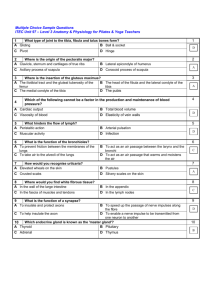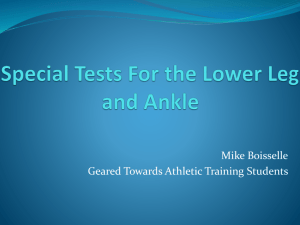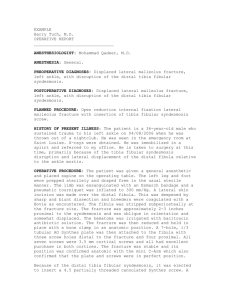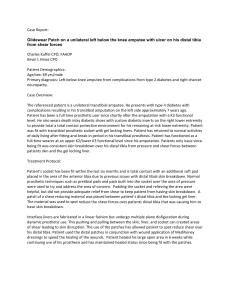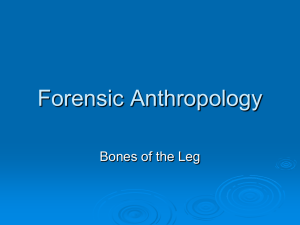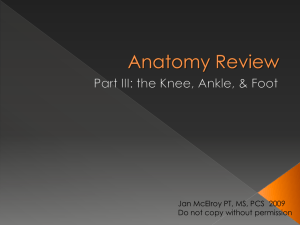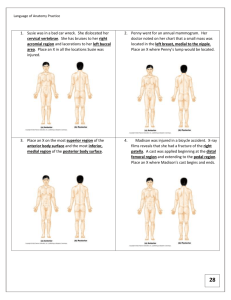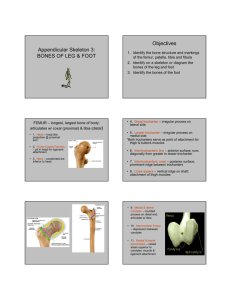62 - Museum of London
advertisement
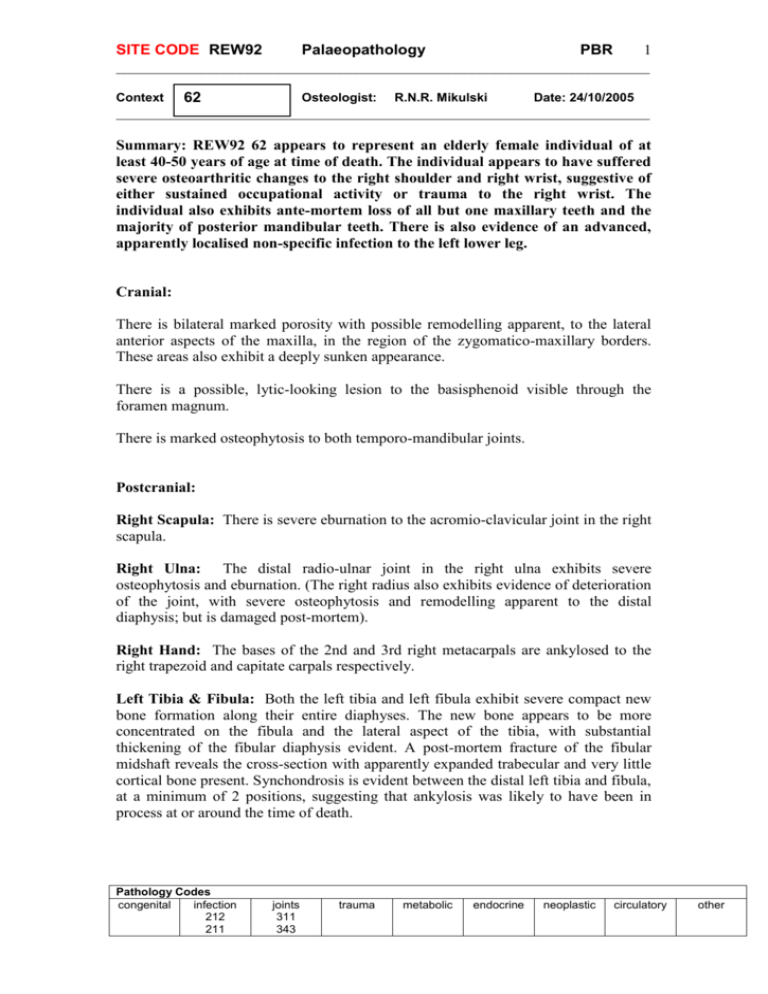
1 SITE CODE REW92 Palaeopathology PBR _____________________________________________________________________ Osteologist: R.N.R. Mikulski Date: 24/10/2005 62 _____________________________________________________________________ Context Summary: REW92 62 appears to represent an elderly female individual of at least 40-50 years of age at time of death. The individual appears to have suffered severe osteoarthritic changes to the right shoulder and right wrist, suggestive of either sustained occupational activity or trauma to the right wrist. The individual also exhibits ante-mortem loss of all but one maxillary teeth and the majority of posterior mandibular teeth. There is also evidence of an advanced, apparently localised non-specific infection to the left lower leg. Cranial: There is bilateral marked porosity with possible remodelling apparent, to the lateral anterior aspects of the maxilla, in the region of the zygomatico-maxillary borders. These areas also exhibit a deeply sunken appearance. There is a possible, lytic-looking lesion to the basisphenoid visible through the foramen magnum. There is marked osteophytosis to both temporo-mandibular joints. Postcranial: Right Scapula: There is severe eburnation to the acromio-clavicular joint in the right scapula. Right Ulna: The distal radio-ulnar joint in the right ulna exhibits severe osteophytosis and eburnation. (The right radius also exhibits evidence of deterioration of the joint, with severe osteophytosis and remodelling apparent to the distal diaphysis; but is damaged post-mortem). Right Hand: The bases of the 2nd and 3rd right metacarpals are ankylosed to the right trapezoid and capitate carpals respectively. Left Tibia & Fibula: Both the left tibia and left fibula exhibit severe compact new bone formation along their entire diaphyses. The new bone appears to be more concentrated on the fibula and the lateral aspect of the tibia, with substantial thickening of the fibular diaphysis evident. A post-mortem fracture of the fibular midshaft reveals the cross-section with apparently expanded trabecular and very little cortical bone present. Synchondrosis is evident between the distal left tibia and fibula, at a minimum of 2 positions, suggesting that ankylosis was likely to have been in process at or around the time of death. Pathology Codes congenital infection 212 211 joints 311 343 trauma metabolic endocrine neoplastic circulatory other 2 SITE CODE REW92 Palaeopathology PBR _____________________________________________________________________ Osteologist: R.N.R. Mikulski Date: 24/10/2005 62 _____________________________________________________________________ Context Additional Observations: There are bilateral enthesopathies (?) to the lateral margins of the foramen magnum. There is marked osteophytosis to many extant hand phalanges, especially the base of 1 unsided distal hand phalanx. There are marked enthesopathies to the humeral epicondyles, (especially the right humerus), the diaphyses of the hand phalanges, the left iliac crest and the posterior aspect of the proximal right tibia. There are slight enthesopathies, bilaterally to the proximal ulnae and also to the heel of the right calcaneus. The superior aspect of the body of the 11th thoracic vertebra has been sampled. Discussion The changes in the maxilla appear to be the result of advanced infection to the maxilla, with the apparent ante-mortem loss of virtually all maxillary teeth. The possible lesion to the basisphenoid might be related to these changes, although alternatively it is simply the result of post-mortem damage. The degenerative changes observed in the right shoulder and the right wrist suggest the likelihood of either sustained occupational activity involving the right arm and/or hand; or alternatively the possibility of traumatic arthritis, possibly as the result of a trauma event to the right wrist. The infectious changes seen in the left lower leg appear to represent a case of probable non-specific osteomyelitis. There is however, no obvious cloaca or sequestra. The changes appear to be limited to the left lower leg, although the proximal ends of the left tibia and fibula are missing along with the left patella and the distal end of the left femur. The posterior aspect of the extant distal left femoral diaphysis does appear to exhibit some possible evidence of new bone remodelling. The most likely causative agent for the changes in the left lower leg therefore seems to be non-specific osteomyelitis. It’s possible these changes might be related to those observed in the maxilla/cranium. Given the lack of cloacae or sequestra, it’s possible sclerosing osteomyelitis (Garre) might be suggested as a more specific diagnosis; however septic or traumatic arthritis cannot be ruled out, especially in the absence of the left knee joint. Again, with the absence of cloaca or sequestra, syphilis should not be discounted. Pathology Codes congenital infection 212 211 joints 311 343 trauma metabolic endocrine neoplastic circulatory other

